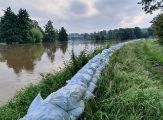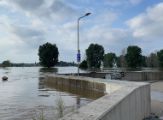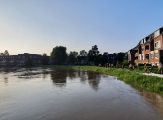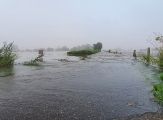Flooding in Limburg: 24/7 on-site support
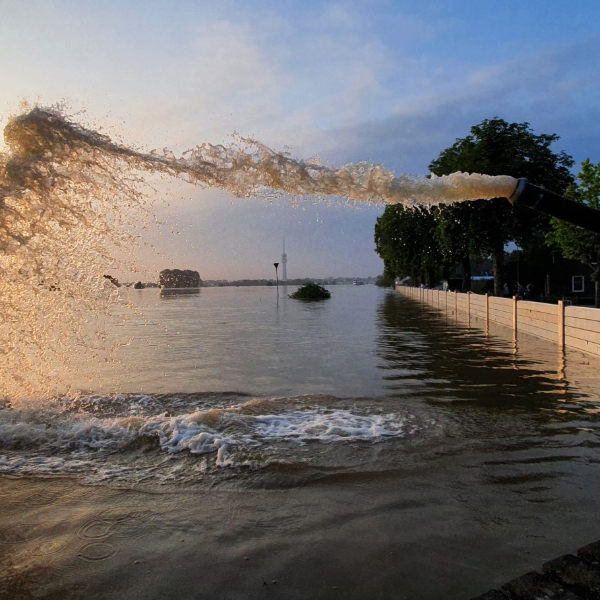
Flooding in Limburg: 24/7 on-site support
Due to persistent rainfall, the water level of rivers rose to extreme levels last summer. With our up-to-date knowledge of flood defences for the Meuse and its tributaries, we offered the Limburg Water Authority on-site support, day and night. Project manager Joost Lansink takes a look back.
Colleagues on location
‘Since 2019, we’ve been working with HKV on the statutory assessment of all primary flood defences in Limburg. We were at an advanced stage when the water began to rise in the summer of 2021. The water authority first scaled up its own emergency response services, but they had a lot to deal with. Which locations are critical? Where will the danger be? There was a need for support. Because of our assessment of the dykes, we had access to all the data and blueprints. Also, Witteveen+Bos employees have been working for the past fifteen years to make the Meuse safer in Limburg. So, we’re well aware of the current state of the flood defences. Following a call from the water authority, a number of colleagues – armed with waders, a camera and safety jackets – immediately jumped in the car. Eight of us in total worked in shifts to provide the water authority with support.’
A kilometre of sandbags
‘Normally, we assess and design flood defences and carry out planning studies for dyke reinforcements and river widening: long-term projects aimed at keeping water at bay. Once the water breaks through, our toolbox is limited: there’s no time to put up sheet piles then. It requires a different mindset. Together with our colleagues at HKV, we identified the critical spots. There was a real chance, for example, that the water in the Roer would rise to such a height that a neighbourhood in Roermond would be flooded. Based on our advice, the army used sandbags to heighten the dyke over a length of more than a kilometre. It was also decided to raise the height of a well that was also transporting sand. In several other places, we closely monitored the situation until the danger had largely passed.’
Requirements for smaller rivers
‘All the primary flood defences held, which is good news. It proves that the efforts of the past years – including all the work on the Meuse and the Border Meuse project – are paying off. Also, our models and calculations proved to give a realistic picture of current safety, which is pleasing. At the same time, smaller rivers – such as the Geul, the Roer and the Sambeek – had to cope with large amounts of water in a short time. The consequences of this are that some houses still have damp walls and there is a lot of material damage and intangible loss. Water regulations’ requirements for smaller rivers are less strict: we accept that these rivers will occasionally overflow their banks. In view of climate change, this needs addressing.’
Wake-up call
‘I’m proud of my colleagues and impressed by the solidarity of everyone who worked to help limit the damage. Floodplains and flood catchment areas are dry 360 days a year, when the river is calm. During this time, the importance of good dykes is not always an easy message to convey. Flooding is, in that respect, a wake-up call. The situation in Limburg last summer teaches us two things: that the Netherlands is taking the right approach, and that we are far from finished. Colleagues’ efforts for dyke reinforcements in the Northern Meuse Valley will further improve flood safety. Witteveen+Bos will also be involved in further dyke reinforcements in the coming years, both in Limburg and elsewhere in the Netherlands. With this event still fresh in our minds, it’s rewarding work.’
More information?

